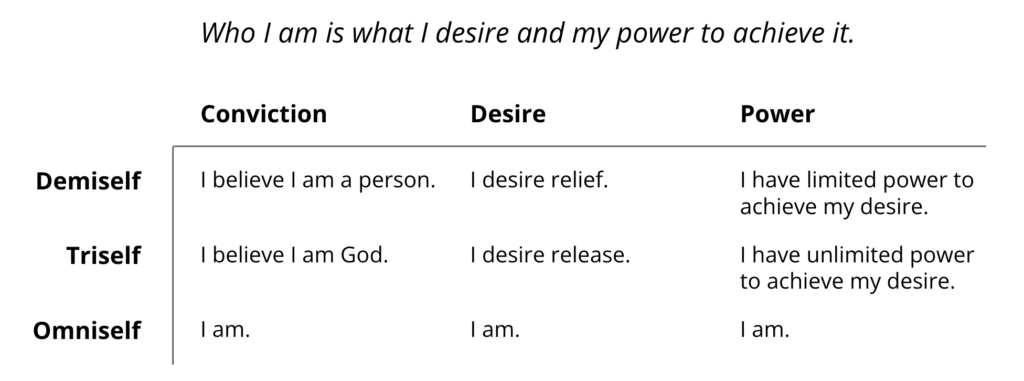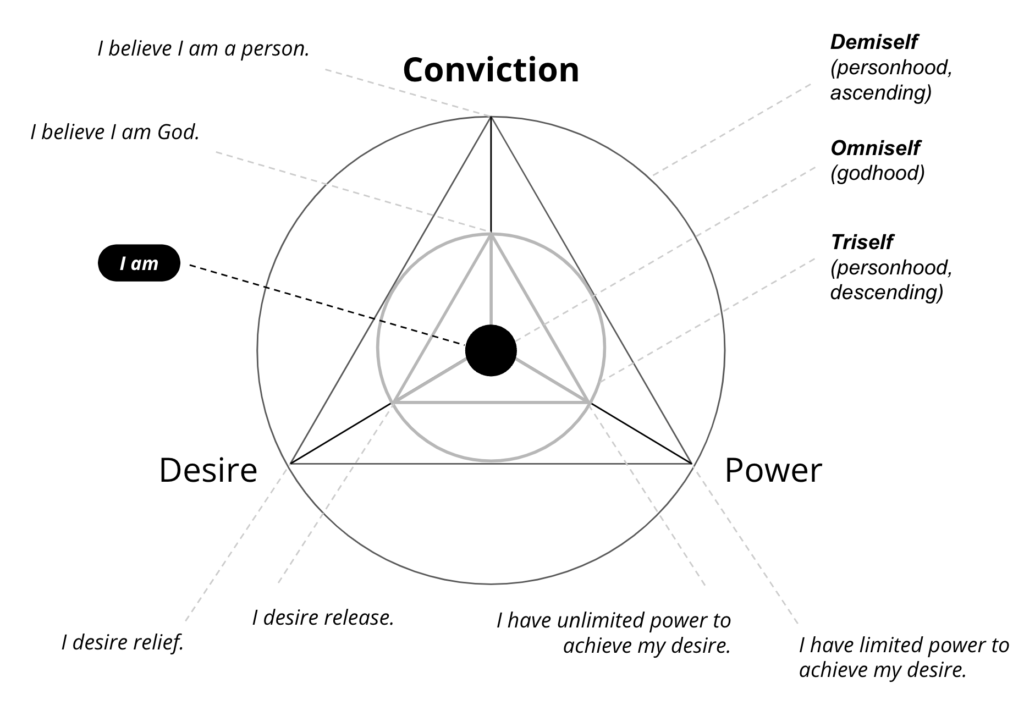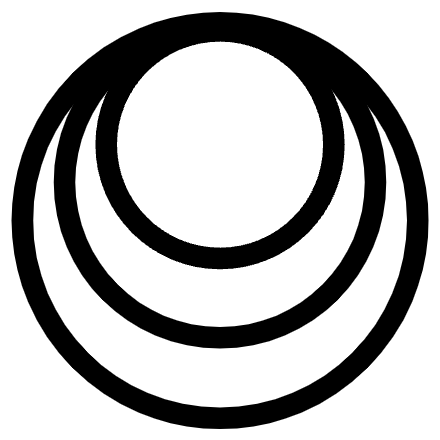As I simplify and distill my understanding of who I am, I articulate cleaner visuals using ever more elementary descriptions. With every simplification, I find it a little easier to ingest, repeat, and believe. And now I can explain what is happening. I call it the Selfist Trinity.

There are three existential constants I experience: my conviction, my desire, and my power. My conviction is my belief in who I am and the strength of that belief. My desire is what I yearn for to end my suffering. And my power is my ability to achieve my desires.
These three constants form an existential trinity that defines the nature of my experience. Combined into a single model, I can visualize my ascent and descent relative to these three dimensions. There are three concentric rings forming my three states of self: the largest and outer ring represents demiself; the second of the three represents triself; and the smallest, densest inner ring represents omniself.

The only one of these three dimensions I have to focus on is my Conviction. Through conviction, I can influence my Desire, and in turn my Power. If I focus directly on my desire without conviction, then nothing will change or improve, and I will only invite additional suffering into my experience. I must believe in who I am in order to influence my desire. And, as I change my desire, my power will expand to make it possible to achieve what I seek.
Note that I will reverse the orientation of the rings, and have the largest concentric circle represent omniself, as that would be a more accurate depiction of my actual experience.
Although my suffering is the most palpable symptom of my illness, it is not where I start or focus. The selfist trinity exposes the relationships between the various dimensions of my life, aligning the remainder of my work into a single, predictable path.
…
